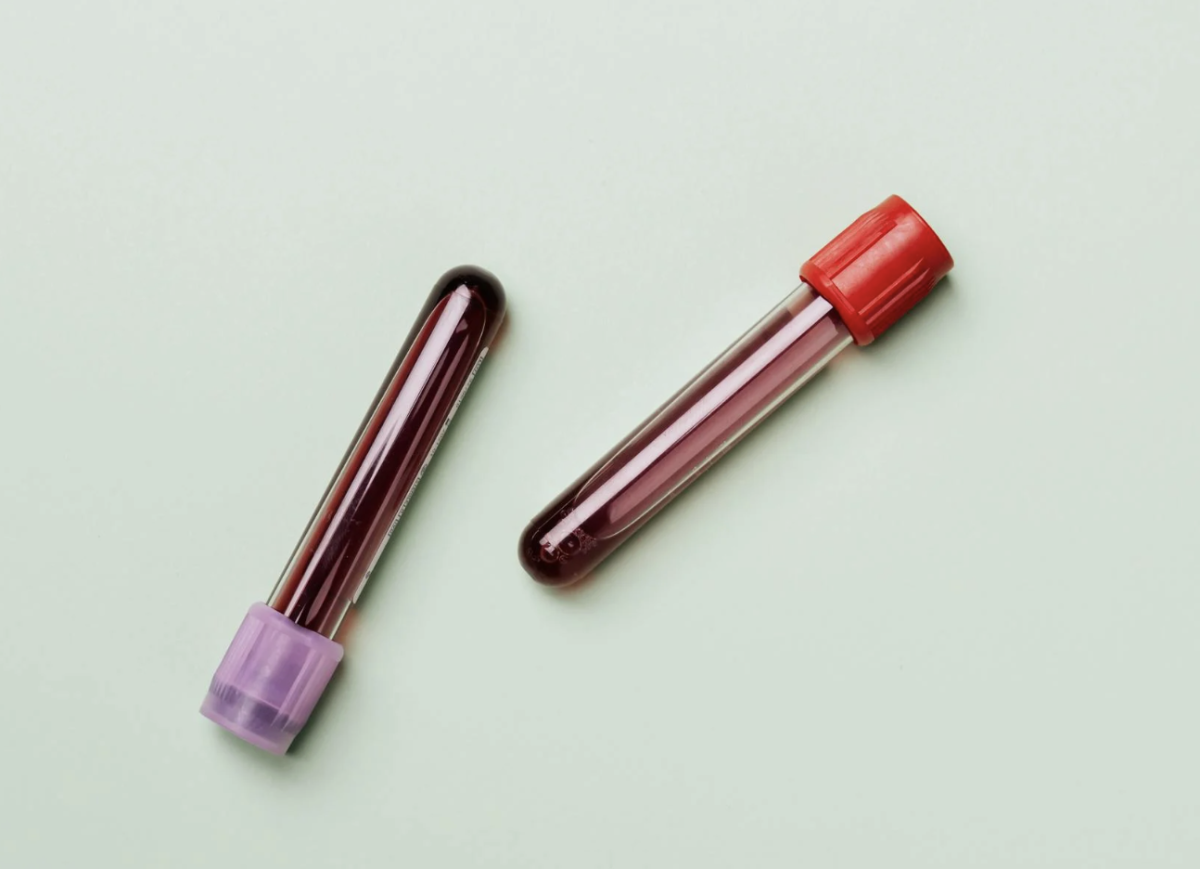
When muscle weakness starts creeping in, most people hope it's nothing serious. But for those facing amyotrophic lateral sclerosis (ALS), the journey to getting answers has been an exhausting marathon of appointments, tests, and uncertainty. That could all change thanks to a groundbreaking blood test that promises to transform how we detect this devastating disease.
Currently, ALS patients experience a diagnostic delay of 10–16 months from symptom onset.
For a disease where median survival is 2–4 years, that represents a huge chunk of precious time lost to confusion and worry.
But researchers from UCLA Health and the University of Queensland have developed a simple blood test that could cut this waiting period dramatically.
The frustrating reality of ALS diagnosis today
The current diagnostic process is anything but straightforward.
Research shows the median total diagnostic time is 11.5 months, and the picture gets even more challenging for older adults.
Studies found that diagnostic timelines were longer in patients over age 60—exactly the demographic most likely to develop ALS.
The numbers tell a frustrating story: about half of patients received wrong diagnoses initially and saw an average of three different physicians before ALS was correctly identified.
Many seniors find themselves bounced between specialists, undergoing expensive and sometimes uncomfortable tests, all while their symptoms progress.
Current ALS diagnostic challenges
Multiple doctor visits and specialist referrals required
Expensive electromyography (EMG) tests and nerve conduction studies
MRI scans and blood work to rule out other conditions
Process of elimination rather than definitive identification
Significant emotional and financial stress on families
The leading contributors to delayed diagnosis include gaps in clinical knowledge among primary care providers and delays in accessing neurologists or neuromuscular specialists.
When you're dealing with a specialist, the outlook improves: ALS specialists can diagnose the condition in an average of 9.6 months, while non-specialist neurologists take much longer.
Also read: Major breakthrough in HIV cure research: “Nothing has come close”
A revolutionary approach using DNA fingerprints
The new blood test works by analyzing something called cell-free DNA (cfDNA)—tiny fragments of genetic material that dying cells release into the bloodstream.
Think of it as reading the body's own distress signals written in genetic code.
Every day, cells throughout your body naturally die and release bits of their DNA into your blood.
These fragments carry chemical signatures that reveal which tissues they came from—muscle, brain, heart, or other organs.
The researchers discovered they could identify these tissue-specific "fingerprints" to see exactly what's happening inside ALS patients' bodies.
Because scanning the entire genome would be expensive and time-consuming, the scientists developed a focused method targeting nearly 5,000 tissue-informative markers—specific points in DNA where methylation patterns differ by tissue type.
By tracking these key markers, they could pinpoint which tissues were releasing DNA fragments into the bloodstream and link them to patterns of disease activity.
"There is a strong need for an ALS biomarker to diagnose patients sooner, to support clinical trials, and to track disease progression. Our research demonstrates cell-free DNA with a machine learning model as a potential solution to satisfy this need."
What makes this approach so powerful is that ALS affects multiple body systems, not just the nervous system.
The test can detect increased cell death from skeletal muscle and even heart tissue, providing a comprehensive picture of the disease's impact.
Also read: Medical breakthrough: Could this new treatment finally end one of the world’s deadliest diseases?
Remarkable accuracy that could change everything
The results from testing 192 participants across two continents were striking.
Participants came from two major research groups—one at the University of Queensland in Australia and the other at the University of California, San Francisco—with ALS, primary lateral sclerosis (PLS), and other neurological conditions included for comparison.
ALS patients showed roughly double the amount of cfDNA compared to healthy controls—about 125 picograms per milliliter—reflecting widespread muscle and nerve cell death.
The artificial intelligence-powered analysis could distinguish ALS patients from healthy individuals with up to 99% accuracy when tested within the same group.
Even when researchers trained the AI model on data from one country and tested it on patients from another, accuracy remained high at around 90%.
They used an advanced algorithm known as elastic net regression, combining DNA methylation data with variables like age and sex to sharpen predictions.
Perhaps most remarkably, the test identified one seemingly healthy participant who had abnormally high muscle-related DNA in their blood.
Further investigation revealed this person carried a genetic mutation associated with ALS, suggesting the test might even detect the disease before symptoms appear.
Researchers also found cfDNA changes near genes involved in DNA repair and programmed cell death, such as SHISA5 and XRCC6—both previously linked to ALS pathology and aging.
Even the physical structure of the cfDNA fragments, independent of methylation patterns, provided diagnostic clues, suggesting the DNA’s shape and breakage patterns themselves hold valuable information.
Also read: Vision breakthrough: Discover the new way scientists are restoring eyesight—no surgery needed!
Understanding what this means for patients and families
Beyond diagnosis, this blood test offers something equally valuable—the ability to track disease progression.
Researchers found they could predict patients' lung capacity and motor function scores by measuring the DNA patterns, giving doctors and families better insight into the disease's trajectory.
The test also revealed "epigenetic aging"—signs that ALS patients' DNA appears older than their actual chronological age.
This biological aging was linked to faster disease progression, providing new insights into how ALS affects cellular health across multiple body systems.
Unlike existing biomarkers such as neurofilament light chain, which only indicate nerve injury, this cfDNA test offers a multi-system view—reflecting nerve, muscle, immune, and even cardiac tissue for a more complete picture of the disease.
It also outperformed traditional markers by distinguishing ALS not only from healthy individuals but also from patients with other neurological disorders, addressing a major diagnostic gap in current testing methods.
Did you know?
Did you know?
The new blood test can detect tissue breakdown patterns from multiple organs simultaneously, unlike current biomarkers that only show nerve damage. This multi-system view helps distinguish ALS from other neurological conditions that may cause similar symptoms.
Also read: Breakthrough discovery: How scientists are overcoming drug-resistant tuberculosis
What families can expect going forward
The research was co-led by Dr. Christa Caggiano of UCLA Health, Dr. Noah Zaitlen of UCLA, and Dr. Fleur Garton at the University of Queensland.
The team is now moving into larger, more diverse clinical trials to validate their findings and confirm the test’s effectiveness across populations.
If successful, this simple blood test could revolutionize ALS care in several ways.
Early detection would allow families to begin planning sooner, whether that means making medical decisions, arranging care, or simply having more quality time together.
As researchers note, earlier diagnosis gives patients more time to deal with the impacts of this terminal disease—from the logistics of medical care to preparations on financial, emotional, and family fronts.
For those with family histories of ALS, the test might eventually enable screening before symptoms develop, potentially opening doors to early interventions that could delay disease onset.
Also read: A groundbreaking breakthrough—could this Yale doctor’s cancer discovery change everything?
The broader promise beyond ALS
This breakthrough could extend to other neurodegenerative diseases where early detection is crucial.
The same approach of analyzing tissue-specific DNA signatures in blood could potentially help diagnose Alzheimer's, Parkinson's, and other conditions that currently require lengthy diagnostic processes.
By deciphering cfDNA signals from multiple tissues, researchers can ultimately track nervous system health through a single blood test—bringing personalized neurology one step closer to reality.
Key takeaways
- Potential to reduce ALS diagnosis time from nearly a year to weeks or months
- Simple blood test rather than multiple invasive procedures
- Better tracking of disease progression for treatment planning
- Possible early detection before symptoms appear in at-risk individuals
- Hope for similar advances in other neurological conditions
Also read: Is this breakthrough drug the key to preventing—even reversing—dementia? Here’s what doctors say
Looking ahead with cautious optimism
While this research represents a major step forward, it will likely be several years before the test becomes widely available in clinical practice.
The larger trials needed to validate the approach across diverse populations will take time, and regulatory approval processes require thorough safety and effectiveness reviews.
However, for families currently navigating the uncertain path of neurological symptoms, this breakthrough offers genuine hope.
The prospect of replacing months of anxiety and medical uncertainty with a definitive blood test represents more than just medical progress—it’s the promise of precious time restored.
Given the urgent need for faster ALS recognition, this research couldn’t come at a more important time.
While we await broader availability, the work continues to advance our understanding of this complex disease and move us closer to more effective treatments and, ultimately, a cure.
What This Means For You
The research findings are available online in the journal Genome Medicine, marking another important milestone in the fight against ALS and offering new hope for faster, more accurate diagnosis.
Read next:
- Trouble sleeping? A newly approved device could offer a quiet breakthrough
- Could this breakthrough vaccine change the future of this cancer's treatment?
- This 20-minute test could save your life: a breakthrough in prostate cancer detection!
What questions do you have about this breakthrough, or how might earlier ALS detection impact you or your family's healthcare planning? Share your thoughts in the comments below.
Primary Source
https://www.yahoo.com/news/articles/blood-test-breakthrough-could-transform-210700581.html
Time to Diagnosis and Factors Affecting Diagnostic Delay in Amyotrophic Lateral Sclerosis - Amyotrophic Lateral Sclerosis - NCBI Bookshelf
Cited text: However, a recent literature review found that ALS patients experience a diagnostic delay of 10–16 months from symptom onset.
Excerpt: ALS patients experience a diagnostic delay of 10-16 months from symptom onset
https://www.ncbi.nlm.nih.gov/books/NBK573423/
Current State and Future Directions in the Diagnosis of Amyotrophic Lateral Sclerosis - PMC
Cited text: Given the short median survival of 2 to 4 years [3,4] and a diagnostic delay of 10 to 16 months [5], there is an urgent need for optimizing diagnostic...
Excerpt: median survival is 2-4 years
https://ncbi.nlm.nih.gov/pmc/articles/PMC10000757
Diagnostic timelines and delays in diagnosing amyotrophic lateral sclerosis (ALS) - PMC
Cited text: Median total diagnostic time was 11.5 months.
Excerpt: Research shows the median total diagnostic time is 11.5 months
https://pmc.ncbi.nlm.nih.gov/articles/PMC4433003/
Diagnostic timelines and delays in diagnosing amyotrophic lateral sclerosis (ALS) - PubMed
Cited text: Median total diagnostic time was 11.5 months.
Excerpt: Research shows the median total diagnostic time is 11.5 months
https://pubmed.ncbi.nlm.nih.gov/24981792/
Diagnostic timelines and delays in diagnosing amyotrophic lateral sclerosis (ALS) - PMC
Cited text: Diagnostic timelines were longer in patients with age > 60 years (p < 0.001), sporadic ALS (p = 0.043), and limb onset (p = 0.010).
Excerpt: Studies found that diagnostic timelines were longer in patients over age 60
https://pmc.ncbi.nlm.nih.gov/articles/PMC4433003/
Diagnostic timelines and delays in diagnosing amyotrophic lateral sclerosis (ALS) - PubMed
Cited text: Diagnostic timelines were longer in patients with age > 60 years (p < 0.001), sporadic ALS (p = 0.043), and limb onset (p = 0.010).
Excerpt: Studies found that diagnostic timelines were longer in patients over age 60
https://pubmed.ncbi.nlm.nih.gov/24981792/
Diagnostic timelines and delays in diagnosing amyotrophic lateral sclerosis (ALS) - PubMed
Cited text: Diagnostic timelines were longer in patients with age > 60 years (p < 0.001), sporadic ALS (p = 0.043), and limb onset (p = 0.010).
Excerpt: Studies found that diagnostic timelines were longer in patients over age 60
https://pubmed.ncbi.nlm.nih.gov/24981792/
Diagnostic timelines and delays in diagnosing amyotrophic lateral sclerosis (ALS) - PMC
Cited text: About half of the patients (52%) received an alternative diagnosis and each patient saw an average of three different physicians before ALS diagnosis ...
Excerpt: about half of patients (52%) received wrong diagnoses initially and saw an average of three different physicians before ALS was correctly identified
https://pmc.ncbi.nlm.nih.gov/articles/PMC4433003/
Diagnostic timelines and delays in diagnosing amyotrophic lateral sclerosis (ALS) - PubMed
Cited text: About half of the patients (52%) received an alternative diagnosis and each patient saw an average of three different physicians before ALS diagnosis ...
Excerpt: about half of patients (52%) received wrong diagnoses initially and saw an average of three different physicians before ALS was correctly identified
https://pubmed.ncbi.nlm.nih.gov/24981792/
Survey Suggests Opportunities to Curb ALS Diagnostic Delay Through Primary Care Education
Cited text: The leading contributors to delayed diagnosis of amyotrophic lateral sclerosis (ALS) in the primary care setting are gaps in clinical knowledge and/or...
Excerpt: The leading contributors to delayed diagnosis include gaps in clinical knowledge among primary care providers and delays in accessing neurologists or neuromuscular specialists
https://consultqd.clevelandclinic.o...agnostic-delay-through-primary-care-education
Research Matters December 2024 | The ALS Association
Cited text: The average time for ALS/neuromuscular specialists to diagnose ALS from initial consult is 9.6 months (median 4.5 months), while it is 16.7 months for...
Excerpt: ALS specialists can diagnose the condition in an average of 9.6 months, while non-specialist neurologists take 16.7 months
https://www.als.org/research-matters-december-2024
Survey Suggests Opportunities to Curb ALS Diagnostic Delay Through Primary Care Education
Cited text: Policy · “Studies indicate that ALS is typically diagnosed about one year after it could first be,” says John Morren, MD, a Cleveland Clinic neurologi...
Excerpt: As researchers note, earlier diagnosis gives patients "more time to deal with the impacts of this terminal disease, from the logistics of medical care to preparations on financial, emotional and family fronts"
https://consultqd.clevelandclinic.o...agnostic-delay-through-primary-care-education






